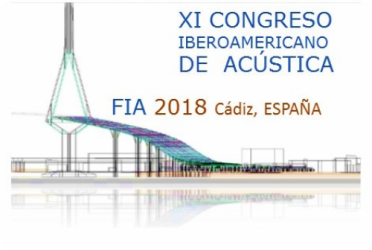
Comments: download file (pdf)
Ref.: XI Congreso Iberoamericano de Acústica - TECNIACUSTICA'18, Cadiz
(Spain), October 2018
Abstract:
In coastal areas close to rocky shores, the bio-acoustic chorus produced by benthic invertebrates
can be quite representative. Those sounds can be originated by the movement of organisms on the
substrate or by the friction and/or impact of the hard structures of their bodies. Thus, when many
individuals are active in the same environment, their sounds merge into a unique characteristic
bio-acoustic signature that resembles that of a frying pan. This work aims to characterize this
rock shore bio-acoustic signature, its temporal variation and its possible relation with abiotic
factors. A structure with 4 hydrophones (positioned in the vertices of a regular tetrahedron with ~
1 m of side) was installed near Cabo Frio Island, in Arraial do Cabo, Brazil, and a visual census of
the benthic fauna was carried out on the rocky shore located 5 m from the hydrophone. Water
temperature and light data were collected and acoustic data were analyzed together with environmental
data (tide, rain, wind, solar radiation). The area of study is recognized as one of the main points
of occurrence of the upwelling phenomenon on the Brazilian coast. This is due to the geomorphology
of the coastal zone and the predominance of the winds of the Northeast quadrant. This phenomenon
is characterized by the outcropping of deep, cold and nutrient-rich waters to the surface, especially
during the spring and summer months and makes the site an unique and diverse environment in species
of organisms. The bio-acoustic interest groups recorded in this survey were barnacles, bivalves, sea
urchins and snapping shrimps, which were recorded in different areas of the rocky shore. Apart from
the usual diurnal pattern showing biological activity increase during the night period and at dawn
and dusk, an after dusk noise increase in the lower band was detected. This temporal pattern may be
related to the biological activity of the species that live near the rock shores and the hydrophone.
In addition, the average power is modulated by water temperature (decreases at lower temperatures)
and light intensity (increases during cloudy periods). The relationship between abiotic factors and
bio-acoustic signature can contribute to the understanding of rock shore organisms behavior and to
the development of biotechnological applications.